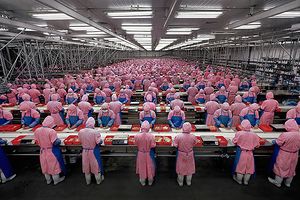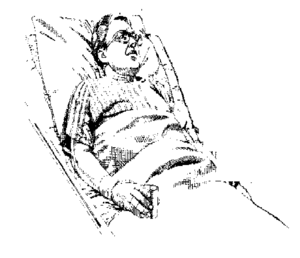Chemical bonding
“There is no party mix that would not go better with a touch of bondage”
“My shirt smells like chemicals!”
– Mackenzie Beck
“The girl blinded me...with science!”
– Thomas Dolby
If you have ever wondered why the atoms that make up molecules stick together and don't just fizzle and come apart, the short answer is chemical bonding.
General Overview[edit | edit source]
Chemical bonding is covered in the General Overview in Chem 101. General Thomas J. Overview (USNR, Ret.) concluded that life would be improved if the universe weren't just a huge cloud of floating atoms. It was he who made it possible for atoms to bond together, in a signature military manoeuver known as the Big Bang.
General Overview left us before his time, diagnosed with electron poisoning from all that work at the atomic level. After his death, some of the bonds began to break. This is called entropy, except in the Third World, where it is called anarchy. The world, or at least Latin America, awaits another military man to put it all back together and maybe even make the trains run on time.
How chemicals bond[edit | edit source]
For centuries, mankind believed that atoms were either magnetically or romantically attracted to each other. However, when Isaac Newton found that a certain apple was attracted to him, it set off a chain-reaction of cognition that led mankind to its more pleasant modern state of understanding.
In fact, there are two separate ways in which chemicals bond:
Ionic bonding[edit | edit source]
- As an illustration, this entire section is written in "ionic pentameter."
In ionic bonding, one atom loans an electron to another. It then must stay in the neighborhood to make sure it gets it back. We see the same effect with Sony Walkmen and lawn tools. This is the weaker of the two types of bonds, because eventually they come out with something better, such as the iPod, and you decide to just let him keep the old one and start working on stealing his girlfriend, the bastard.
The ionic columns of various Greek temples hold the entire buildings together through this same effect.
Covalent bonding[edit | edit source]
“Loan him one electron, you own the atom; loan him them all, the atom owns you!”
– A maxim still heard at industrial banquets, which explains the strength of the covalent bond.
In covalent bonding, one atom also loans an electron to another, but keeps it. The only analogue in the world of commerce is the U.S. banking system, in which the government lets a bank take in a dollar, simultaneously loan it out twenty different times, and tell stockholders it still owns it. The borrowers are not going to all go broke at the same time, are they? And if they do, the government can be given additional power to fight "systemic risks."
Bail bonding[edit | edit source]
A third and weaker type of bonding keeps the participants in one place solely because of the fact that "there is honor among thieves." The suspect and bondsman exchange money and sign documents to establish the good faith that each knows the other does not have. But both remain in the City because, well, where would they go?



